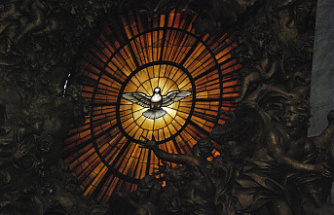For days, Involcan and the National Geographical Institute (IGN), the two scientific agencies that had monitored the island of La Palma, were noticing that the seismic process was accelerating, that the earthquakes had become spotlights more and more shallow (20 kilometers, 10, 8, 5, up to only 100 meters the last), so they did not rule out that it could end up on a rash. The eruption of the volcano in La Palma arrived this Sunday at 15.13 Insular Hours. Two fissures, separated about 200 meters, and eight mouths through which lava emerges. A lava that has caused the evacuation of 5,000 people and dozens of destroyed homes.
An impressive and shocking spectacle rarely seen in Spain and that not only arise surprising and unique images, but also an endless question about the magnitude and evolution of volcanic eruption. ¿What will happen now? What risks arise when it erupts a volcano? Can the teide go back?
Nahum Méndez, a graduate in Geology from the University of Granada and author of the book A geologist in trouble. A trip over time to the deepest of the earth, he explains to the world that "is soon to make any prediction, and the next few hours are crucial."
"There are several direct risks in this eruption," says Méndez. "On the one hand, lava pouring, which swepts everything in its path, as unfortunately we have been able to see. Then there is the fall of volcanic ash that can affect breathing and air traffic, especially if the eruption and ashes continue They are distributed more, "he adds.
At the moment, air traffic remains active and 5,000 people have been evacuated, while the authorities expect no more evictions to occur.
In the last hours social networks have been filled with comments in which they wonder if the eruption of the palm volcano can become active to the Teide. Méndez is forceful: "No".
"No, there is no evidence that of wings to this affirmation. There have been recent eruptions (El Hierro, 2011, Teneguía, 1971) and has not entered the Teide eruption. Most volcanic systems are not connected to each other," he explains .
"The main gases that emits a volcano are water vapor, carbon dioxide and sulfur dioxide. Regardless of toxicity, which would only occur in very close areas, it can produce asphyxia by occupying these gases the place of air, but again This is a risk located near the volcano, "says this geologist.
The new Volcano de la Palma has issued the atmosphere between 6,000 and 9,000 tons of sulfur dioxide (SO2), according to the first estimate of the Canary Islands Volcanological Institute (Involcan).
The Canary authorities have ensured that they hope to know in 48 hours how long the eruption of the Palma volcano will last. However, Méndez explains that "it is soon to make any kind of prediction, and the next few hours and days will be crucial to know where the eruption is directed."
"The internal heat of the Earth comes mainly from the heat generated during the formation of the Earth and the disintegration of the radioactive elements," explains Méndez.
According to Méndez, no. The geologist explains that global warming has nothing to do with this eruption. "This eruption is only caused by the volcanic nature of the island and the geological context in which it is", concludes.
All the forecasts point to the lava wash will lead to the sea. When this happens, the main thing will be evacuated populated areas, as the Canary Authorities are already carried out, and prevent people from approaching the area as much as the images of lava in contact with water are spectacular and all a phenomenon.
"Water and lava in contact can cause the emission of gases and small explosions by the rapid cooling of lava," says Méndez.
"It's soon to know, but in principle the lava will occupy the places where you are running and filling the lowest areas where you pass and cool."
The Volcanological Institute of Canary Islands doubt that the eruption can change the orography of the palm. "The island has been made of thousands of volcanic eruptions, here what is going to add is a little more layer, the only thing that if the castings come to the sea, the island could extend a few square meters more," he says
"You can make a prediction based on the data we have: Volume of stored magma, rhythm of emission of this lava abroad, and studying how the deformation that has been observed on the island and volcanic activity decreases, for example," he says Méndez.
As explained by the director of the Volcanological Institute of Canary Islands, Nemedio Pérez, the duration of the eruption will depend on the amount of magma that has accumulated in "reservoir" of the volcano. "The bag that can be at three or five kilometers of depth is connected to another bag at 20 or 30 kilometers, so the feedback from which is in more depth over the somera could cause the eruption to lengthen".
The new volcano could contain between 17 and 20 million cubic meters of Magma, according to the data disseminated by the Government of the Canary Islands.
This amount surpasses the 11 million cubic meters initially by technicians, but it supposes less than half of the lava that poured Her Teneguía in 1971: 43 million cubic meters.
Date Of Update: 21 September 2021, 15:02











